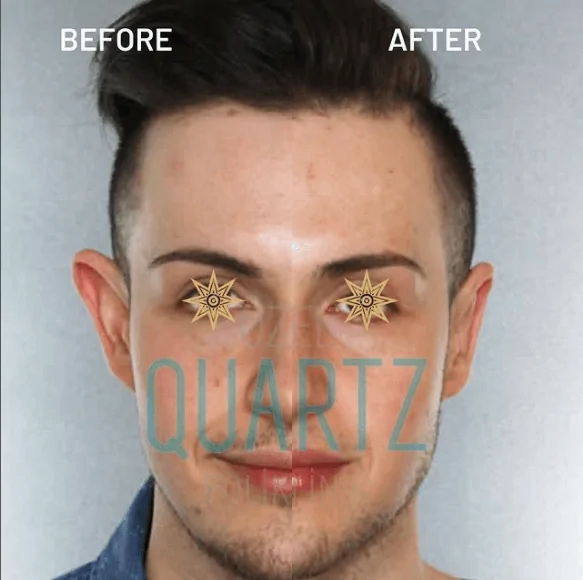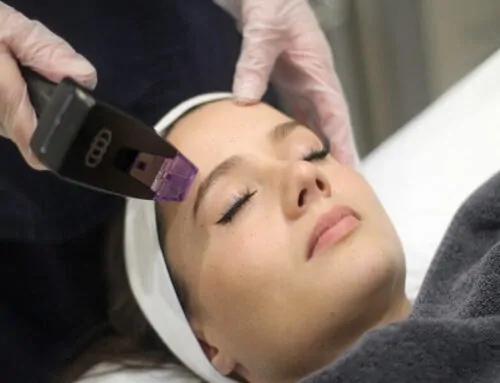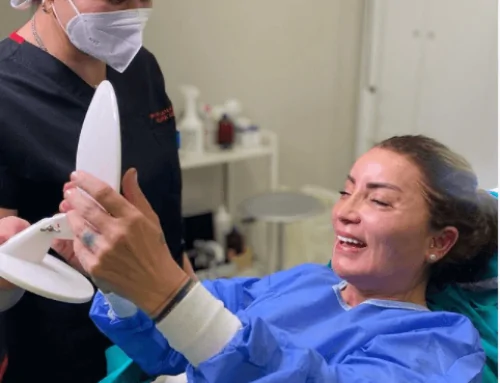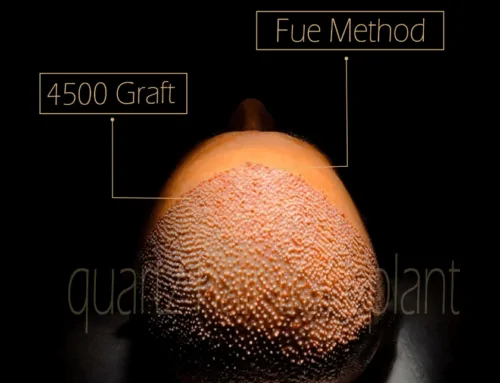 Prominent ears, also known as protruding ears, are a common birth defect that affects the shape and position of the ears. The ears may be larger than normal or may stick out more from the head than is typical. Prominent ears are usually present at birth and are not usually a sign of an underlying medical condition.
Prominent ears, also known as protruding ears, are a common birth defect that affects the shape and position of the ears. The ears may be larger than normal or may stick out more from the head than is typical. Prominent ears are usually present at birth and are not usually a sign of an underlying medical condition.
Prominent ears can be a source of self-consciousness and social discomfort for children and adults, and they may be treated with surgery or other forms of treatment. The appropriate treatment will depend on the individual’s age, the severity of the ear protrusion, and any underlying medical conditions.
How Common are Prominent Ears?
Prominent ears, also known as protruding or “bat” ears, are a common congenital (present at birth) condition that affects a significant proportion of the population. The exact prevalence of prominent ears is difficult to determine, as the condition can range from mild to severe, and can be influenced by a variety of factors, including genetics and environmental factors.
Prominent ears are typically characterized by ears that stick out prominently from the head, either due to an excessive amount of cartilage in the ear or due to a lack of natural folds and contours in the ear. The condition can be cosmetic in nature and may not cause any other health problems. However, some people with prominent ears may experience teasing or bullying, which can have a negative impact on their self-esteem and quality of life.
What are Prominent Ears Called?
Prominent ears, also known as protruding or “bat” ears, are a common congenital (present at birth) condition that affects the shape and appearance of the ears. Prominent ears are typically characterized by ears that stick out prominently from the head, either due to an excessive amount of cartilage in the ear or due to a lack of natural folds and contours in the ear.
The term “prominent ears” is often used to describe the condition, and it is also sometimes referred to as “bat ears,” “protruding ears,” or “ear prominence.” In medical terminology, the condition is often referred to as “ear protrusion” or “otoplasty.”
Are Prominent Ears a Deformity?
Prominent ears, also known as protruding or “bat” ears, are a common congenital (present at birth) condition that affects the shape and appearance of the ears. Prominent ears are generally not considered to be a deformity, as they do not typically cause any functional problems or health issues.
In some cases, surgery may be an option to correct prominent ears. This type of surgery, known as otoplasty, involves reshaping the cartilage and skin of the ear to create a more natural-looking, less prominent appearance. However, it’s important to carefully consider the potential risks and benefits of surgery before making a decision.
How do You Get Rid of Prominent Ears?
If you or a loved one is concerned about prominent ears, there are several options available to correct the condition. Some of the most common options include:
Otoplasty: Otoplasty is a surgical procedure that involves reshaping the cartilage and skin of the ear to create a more natural-looking, less prominent appearance. The procedure is typically performed by a plastic surgeon and may be appropriate for individuals with prominent ears who are self-conscious about their appearance and want to improve their self-esteem.
Ear-tucking techniques: non-surgical ear-tucking techniques, such as the “ear push-up” method, involve using tape or other materials to hold the ears closer to the head in a less prominent position. These techniques may be appropriate for individuals with mild to moderate ear prominence who are looking for a quick and easy solution.
Ear splints: Ear splints are special devices that are designed to hold the ears in a less prominent position over a period of time. They may be appropriate for individuals with mild to moderate ear prominence who are looking for a non-surgical solution.
It’s important to keep in mind that the best option for correcting prominent ears will depend on the individual’s unique situation and goals. If you are considering any of these options, it’s a good idea to discuss your concerns and goals with a healthcare provider. They will be able to provide specific guidance and recommendations based on your individual situation.
How to Fix a Prominent Ear Without Surgery?
Some of the most common non-surgical options for correcting prominent ears include:
Ear-tucking techniques: non-surgical ear-tucking techniques, such as the “ear push-up” method, involve using tape or other materials to hold the ears closer to the head in a less prominent position. These techniques may be appropriate for individuals with mild to moderate ear prominence who are looking for a quick and easy solution.
Ear splints: Ear splints are special devices that are designed to hold the ears in a less prominent position over a period of time. They may be appropriate for individuals with mild to moderate ear prominence who are looking for a non-surgical solution.
Hair styling: In some cases, styling the hair in a certain way may help to cover or camouflage prominent ears. For example, wearing the hair down or pulling it back in a ponytail or bun may help to draw attention away from the ears.
It’s important to keep in mind that the effectiveness of non-surgical options for correcting prominent ears may vary from person to person, and they may not be suitable for everyone. If you are considering any of these options, it’s a good idea to discuss your concerns and goals with a healthcare provider. They will be able to provide specific guidance and recommendations based on your individual situation.
Is Otoplasty Permanent?
Otoplasty, also known as ear surgery or ear pinning, is a surgical procedure that involves reshaping the cartilage and skin of the ear to create a more natural-looking, less prominent appearance. The procedure is typically performed by a plastic surgeon and may be appropriate for individuals with prominent ears who are self-conscious about their appearance and want to improve their self-esteem.
In most cases, otoplasty is considered to be a permanent procedure, as the changes made to the ears during surgery are generally not reversible. However, it’s important to keep in mind that the ears may continue to grow and change over time, and it’s possible that the ears may become slightly more prominent again as the individual ages.
It’s also important to note that otoplasty is not without risks and complications. Some of the potential risks and complications associated with ear surgery include infection, scarring, and the possibility of an uneven or unnatural-looking result.
Can Ears go Back to Normal After Otoplasty?
Otoplasty, also known as ear surgery or ear pinning, is a surgical procedure that involves reshaping the cartilage and skin of the ear to create a more natural-looking, less prominent appearance. The procedure is typically performed by a plastic surgeon and may be appropriate for individuals with prominent ears who are self-conscious about their appearance and want to improve their self-esteem.
In most cases, otoplasty is considered to be a permanent procedure, as the changes made to the ears during surgery are generally not reversible. However, it’s important to keep in mind that the ears may continue to grow and change over time, and it’s possible that the ears may become slightly more prominent again as the individual ages.
It’s also important to note that otoplasty is not without risks and complications. Some of the potential risks and complications associated with ear surgery include infection, scarring, and the possibility of an uneven or unnatural-looking result.
At What Age Can You Get Ear Surgery?
There is no specific age at which ear surgery can be performed, as the appropriate age for the procedure will depend on the individual’s unique situation and goals. However, most plastic surgeons agree that the ears are fully developed by the age of 5 or 6, and this is generally considered to be the ideal age for ear surgery.
Some plastic surgeons may choose to perform ear surgery on younger children if the child is experiencing significant teasing or bullying due to prominent ears, and the procedure is likely to have a positive impact on the child’s self-esteem. However, in these cases, it’s important to carefully consider the potential risks and benefits of the procedure with a healthcare provider before making a decision.
How Long Does It Take for Otoplasty Stitches to Dissolve?
The length of time it takes for the stitches to dissolve after otoplasty surgery can vary depending on the specific type of suture material that was used.
Some types of suture material, such as absorbable sutures, will dissolve on their own over time. This process typically takes several weeks to a few months. Non-absorbable sutures, on the other hand, will not dissolve and will need to be removed by a healthcare provider. The timing of when the non-absorbable sutures are removed will depend on the specific instructions provided by the surgeon.
In general, it is important to follow the post-operative care instructions provided by your surgeon to ensure that the surgical site heals properly and to minimize the risk of infection. This may include keeping the area clean and dry, avoiding strenuous activity, and avoiding contact sports or activities that could cause trauma to the ears. If you have any concerns about the healing process or experience any unusual symptoms, it is important to contact your surgeon for further evaluation and guidance.
Does Prominent Ear Tape Work for Babies?
Prominent ear tape is a type of adhesive tape that is sometimes used to help reshape or reposition the ears in infants and young children. It is typically applied to the back of the ear and is intended to gently pull the ear closer to the head in order to reduce the appearance of protruding ears.
There is limited evidence to suggest that prominent ear tape may be effective in helping to reshape the ears in infants and young children. Some studies have shown that the use of ear tape may result in a modest improvement in the appearance of the ears, but the results are not consistent and may not be noticeable to others.
It is important to note that prominent ear tape is not a substitute for otoplasty, which is a surgical procedure that is used to reshape or reposition the ears. Otoplasty is generally considered to be a more effective and long-lasting treatment for protruding ears, and it is usually performed by a qualified plastic surgeon.
If you are considering using prominent ear tape for your child, it is important to consult with a healthcare provider or a plastic surgeon to discuss the potential risks and benefits of this treatment and to determine the most appropriate course of action for your child’s specific needs.
How to Fix Prominent Ear in Babies?
Prominent ears, also known as protruding or protruding ears, are a common birth defect that affects the shape and position of the ears. Prominent ears can be a source of self-consciousness and social discomfort for children and adults, and they may be treated with surgery or other forms of treatment.
If your child has prominent ears and you are considering treatment, it is important to consult with a healthcare provider or a plastic surgeon to discuss the potential risks and benefits of the available treatment options. The appropriate treatment will depend on your child’s age, the severity of the ear protrusion, and any underlying medical conditions.
Some possible treatment options for prominent ears in infants and young children include:
Otoplasty: Otoplasty, also known as ear surgery or ear pinning, is a surgical procedure that is used to reshape or reposition the ears. It is usually performed by a qualified plastic surgeon and can be done under general anesthesia or local anesthesia with sedation.
Ear splinting: Ear splinting involves the use of a splint or other device to gently reshape the ear cartilage over time. This treatment is usually only recommended for infants who are younger than six months old and may be used in combination with otoplasty.
Ear molding: Ear molding involves the use of a custom-made device to gently reshape the ear cartilage during the newborn period. This treatment is usually only recommended for infants who are younger than two weeks old and may be used in combination with otoplasty.
It is important to keep in mind that the success of these treatments can vary and that they may not be effective in all cases. It is also important to follow the post-treatment care instructions provided by your healthcare provider or surgeon to ensure that the treatment is effective and to minimize the risk of complications.
How Much Does It Cost to Fix Protruding Ears?
The cost of fixing protruding ears, also known as otoplasty or ear surgery, can vary widely depending on a number of factors. These factors may include the specific surgical technique used, the location of the surgery, the surgeon’s experience and reputation, and the patient’s insurance coverage.
In general, the cost of otoplasty can range from several thousand dollars to over $10,000 for both ears. It is important to keep in mind that the cost of otoplasty is usually not covered by insurance unless the procedure is deemed medically necessary to correct a functional deformity or to treat a medical condition.
If you are considering otoplasty to fix protruding ears, it is important to discuss the costs and financing options with your surgeon and/or the surgical facility. Many surgeons and facilities offer financing options or payment plans to help patients afford the cost of the procedure.
It is also important to keep in mind that the cost of otoplasty should not be the primary factor in your decision to undergo the procedure. It is important to carefully weigh the potential risks and benefits of otoplasty and to choose a qualified and experienced plastic surgeon to perform the procedure.





